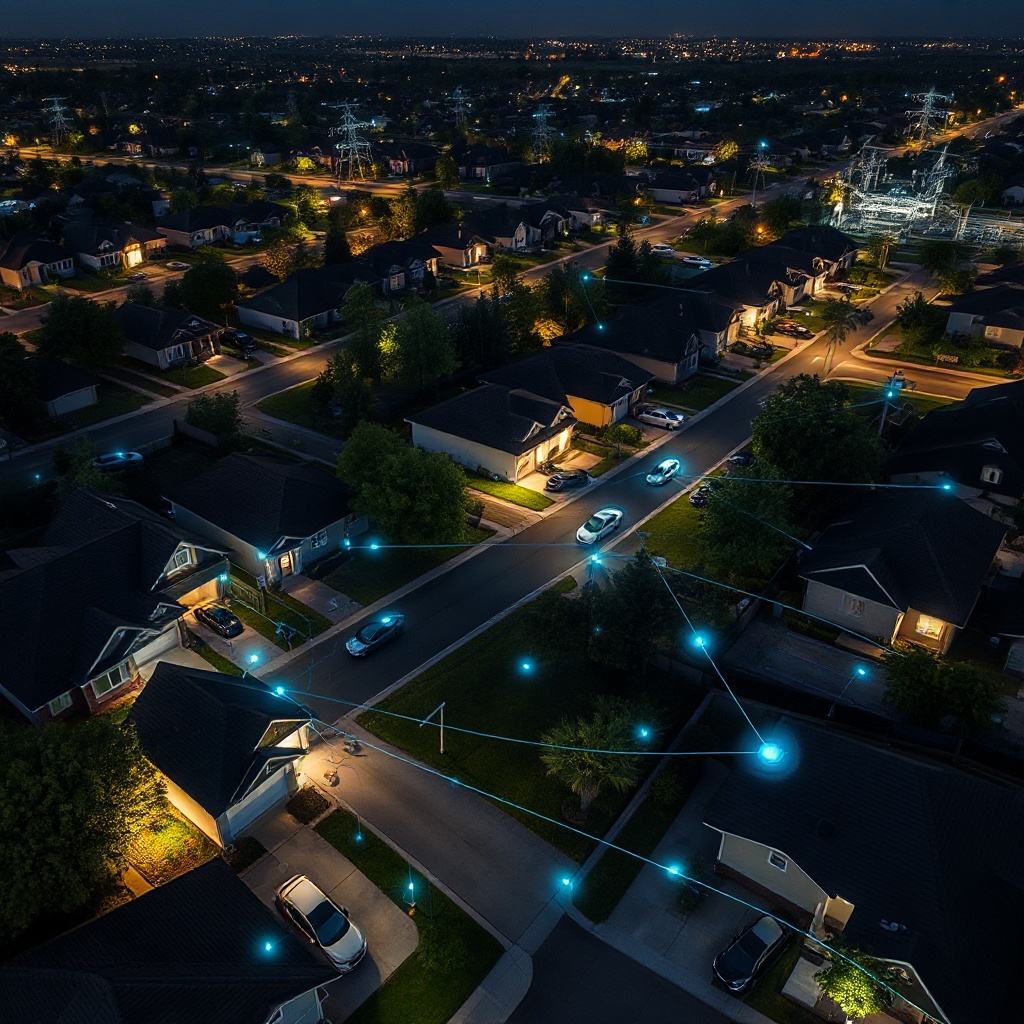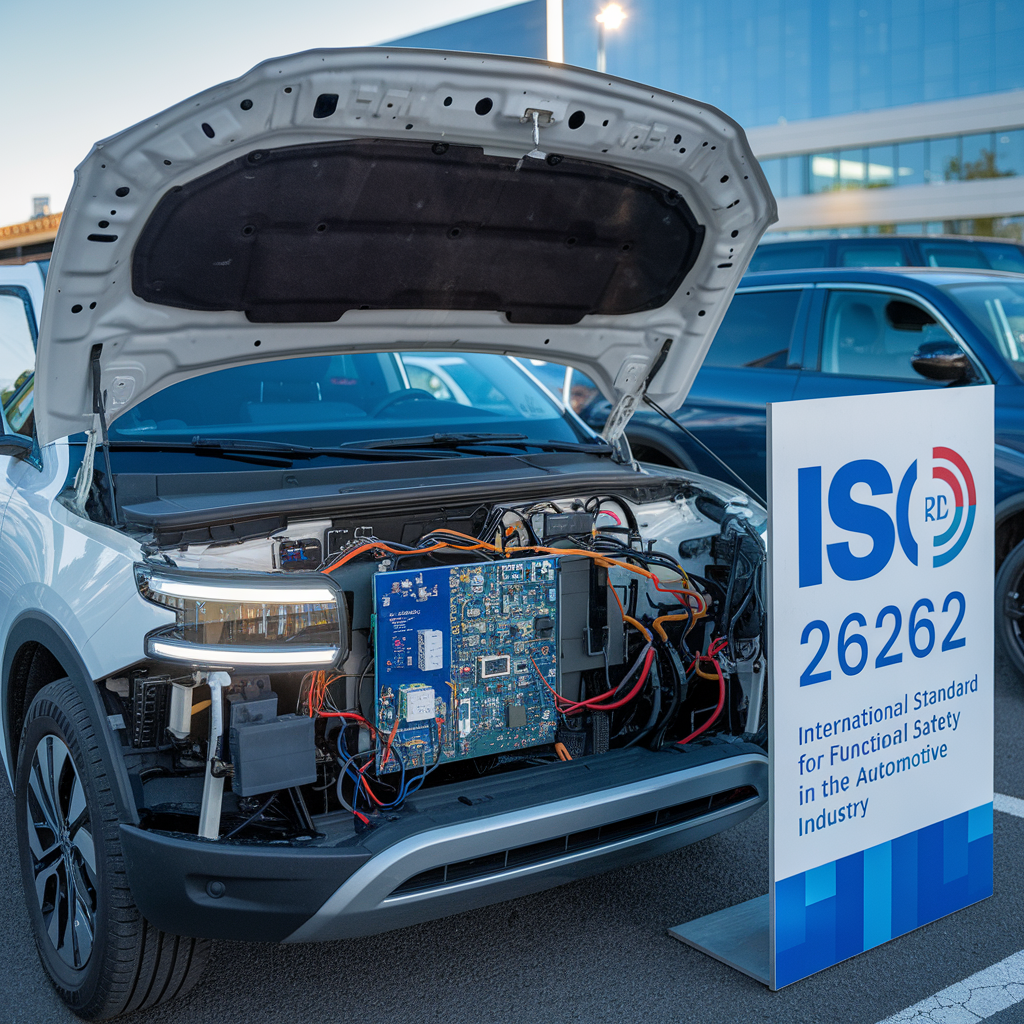
Edge computing revolutionizes utilities with real-time EV load monitoring at the meter, enabling smarter grid management without cloud dependencies or specific vehicle integration.

Drivetech Partners
Edge computing is transforming the utility industry by enabling real-time data processing directly where energy is consumed, creating unprecedented opportunities for smart grid management. Sense's innovative EV Analytics software represents a fundamental shift in how utilities monitor and respond to electric vehicle charging loads by processing high-resolution data at the edge, eliminating cloud computing dependencies while providing detailed insights regardless of vehicle brand or charging equipment.
Key Takeaways
Edge computing processes data locally on AMI 2.0 smart meters, reducing latency to under 5 milliseconds for critical grid applications
Sense's EV Analytics detects charging patterns in real-time without requiring proprietary vehicle telematics or manufacturer integration
By 2025, 75% of enterprise data will be processed at the edge, up from just 10% in 2018
Utilities gain unprecedented visibility into residential EV charging patterns, enabling better forecasting and distribution planning
Edge computing creates the foundation for autonomous grid management systems that respond to changes before human operators detect issues

The Edge Computing Revolution: From Cloud to Grid Edge
The utility sector is experiencing a profound transformation as computing power moves from centralized data centers to the grid edge. This shift isn't merely technological—it fundamentally changes how utilities manage, analyze, and respond to energy consumption patterns.
The numbers tell a compelling story: the global edge computing market is projected to reach $378 billion by 2028, driven by applications requiring near-zero latency. This rapid growth reflects the critical need for faster data processing in sectors where real-time decisions matter most.
For utilities, edge computing delivers three essential benefits:
Dramatically reduced latency (under 5ms) for time-sensitive applications
Decreased bandwidth requirements by processing data locally
Enhanced reliability through decentralized operations
The transition from cloud-dependent to edge-empowered systems is accelerating. According to industry projections, 75% of enterprise data will be processed at the edge by 2025, a dramatic increase from just 10% in 2018. With over 15 billion edge devices already deployed globally, utilities are positioned to leverage this computing revolution to address their unique challenges.
How Sense's EV Analytics Software Changes the Game
At the forefront of this revolution is Sense's EV Analytics software, which processes high-resolution waveform data directly on AMI 2.0 smart meters. This innovative approach represents a fundamental shift in how utilities detect and monitor electric vehicle charging activities.

Unlike traditional approaches that rely on vehicle manufacturer telematics or proprietary charging equipment, Sense's technology works regardless of vehicle brand or charger type. The software analyzes electrical signatures at the meter level, identifying the unique patterns associated with EV charging without requiring direct communication with the vehicle.
This technology delivers several key capabilities:
Real-time detection of when EV charging begins and ends
Accurate measurement of charging load and energy consumption
Identification of charging patterns without consumer opt-in
Support for time-of-use pricing optimization
Advanced peak demand management
By processing data directly at the meter, the system makes autonomous decisions faster than human operators can even detect potential issues. This edge intelligence creates new possibilities for grid management that were previously impossible with cloud-dependent architectures.
Smart Meters: The New Cornerstone of Utility Transformation
Digital smart meters have replaced analog predecessors as the foundation of modern grid management. These devices serve as the ideal platform for edge computing applications, especially in electricity metering where data frequency and resolution requirements continue to increase.

AMI 2.0 smart meters with edge computing capabilities offer substantial improvements over previous generations:
Local processing of high-resolution waveform data
Enhanced security through reduced data transmission
Lower bandwidth requirements for utility networks
Integration with 5G networks for faster communication
Advanced AI capabilities for pattern recognition
Industry analysts project annual smart grid investments to reach $13.8 billion by 2024, with a significant portion dedicated to advanced metering infrastructure that supports edge computing. This investment reflects utilities' recognition that next-generation meters serve as more than simple consumption trackers—they're becoming intelligent nodes in an increasingly distributed energy network.
The EV Challenge: Managing Impact on the Electrical Grid
The rapid adoption of electric vehicles presents both challenges and opportunities for electrical utilities. While EVs represent significant new load, they also offer flexibility in when they consume electricity—if utilities have the right tools to leverage this flexibility.
Research indicates that properly managed EV charging could reduce renewable electricity generation curtailment by up to 500 GWh in 2024, translating to potential savings of $5-15 million annually in avoided electricity costs. These benefits can only be realized with systems that provide accurate, real-time visibility into charging patterns.
Edge computing addresses several critical challenges in EV grid integration:
Near-instantaneous detection of new charging sessions
Real-time load balancing to prevent local transformer overloads
Accurate forecasting of neighborhood-level energy demands
Support for dynamic pricing models that incentivize off-peak charging
Reduced data transmission costs compared to cloud-based solutions
By processing charging data at the meter level, utilities gain unprecedented visibility into residential EV charging without requiring partnerships with vehicle manufacturers or charging equipment providers.
Benefits for Utility Providers: Planning, Efficiency, and Stability
For utility providers, edge computing-enabled EV detection delivers transformative benefits across multiple operational areas. The ability to see exactly when and where electric vehicles are charging provides crucial data for both short-term operations and long-term planning.

In distribution planning, detailed charging data helps utilities:
Identify neighborhoods with high EV adoption rates
Prioritize transformer upgrades based on actual usage patterns
Plan substation capacity enhancements more accurately
Model the impact of continued EV adoption
For grid operations, real-time visibility supports more efficient managed charging programs that balance consumer convenience with grid stability. These programs can modulate charging rates based on current grid conditions without requiring constant communication with cloud servers.
The convergence of information technology, operational technology, and industrial IoT systems creates a unified view of grid performance that wasn't possible before edge computing. This holistic perspective enables utilities to identify potential overload situations before they occur, maintaining reliability while deferring costly infrastructure upgrades.
The Evolving Home-Grid Relationship
Edge computing is fundamentally changing the relationship between homes and the electrical grid. Rather than treating residences as passive consumers, utilities can now view them as active participants in a dynamic energy ecosystem.
This shift enables several important capabilities:
Implementation of dynamic pricing models based on real-time demand
Consumer participation in demand response programs
Integration of home renewable energy and battery storage systems
More personalized energy services and recommendations
Greater consumer awareness of energy consumption patterns
By processing data locally at the meter, utilities can provide faster feedback to consumers about their energy usage while maintaining privacy. This creates new opportunities for engagement that benefit both consumers and grid operators.
The home becomes more than a consumption point—it transforms into an active grid participant, potentially offering flexibility services through managed EV charging or other controllable loads. This bidirectional relationship represents a significant evolution from traditional utility-customer models.
Future Outlook: Edge Computing and the Next Wave of Utility Innovation
The future of edge computing in utility management extends far beyond EV charging detection. As the edge data center market grows to a projected $15.3 billion by 2025, utilities will find new applications for distributed intelligence throughout their operations.
Several emerging trends will shape this evolution:
Integration of AI capabilities directly at the edge for more sophisticated pattern recognition
Expansion to other high-energy home appliances beyond EVs
Development of more autonomous, self-healing grid systems
Enhanced cybersecurity measures for distributed computing environments
Greater coordination between distributed energy resources
The acceleration of EV adoption will continue to drive innovation in edge computing applications as utilities seek to maintain grid reliability while accommodating increasing electricity demand for transportation. This virtuous cycle of adoption and innovation will likely lead to even more sophisticated edge applications in the coming years.
As computing power at the grid edge increases, we can expect a gradual evolution toward more autonomous grid management systems that can respond to changing conditions without human intervention—transforming not just how utilities operate, but how society consumes and interacts with energy.
Sources
nucamp.co - Edge Computing in 2025: Bringing Data Processing Closer to the User
otava.com - 2025 Trends in Edge Computing Security
tdworld.com - The Digital Utility in 2025: Strategic Technologies Shaping Grid Modernization
globalg





